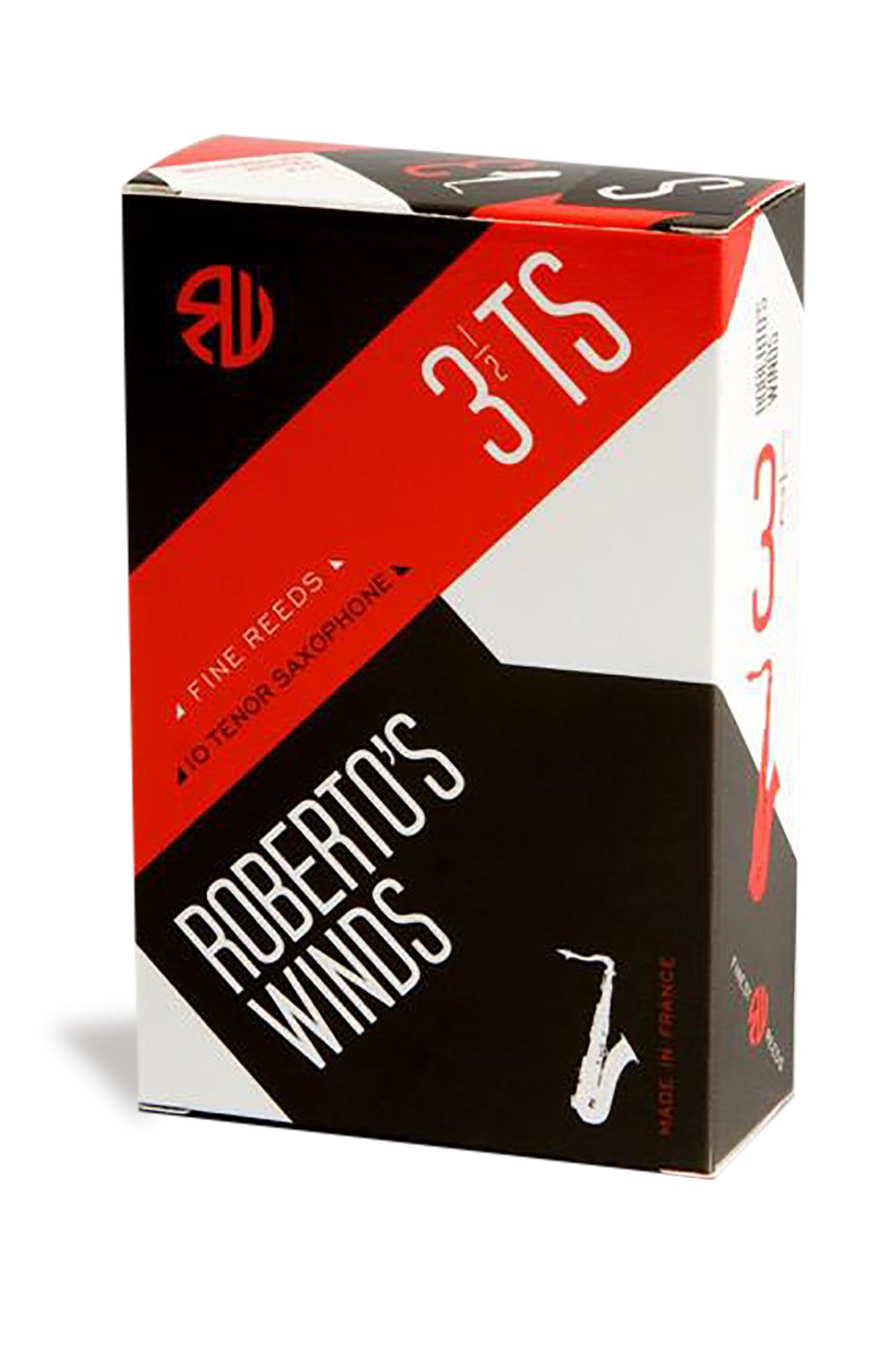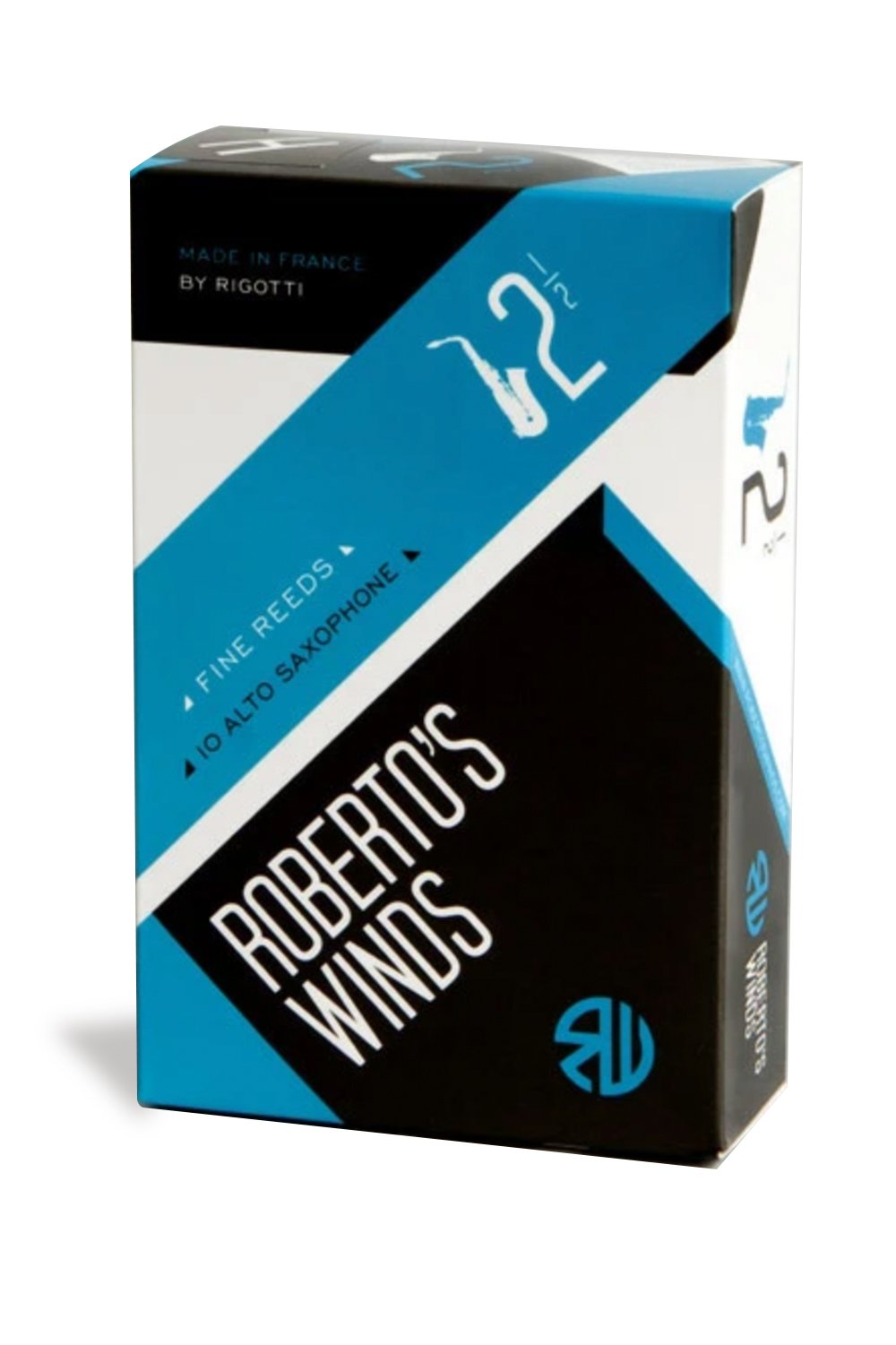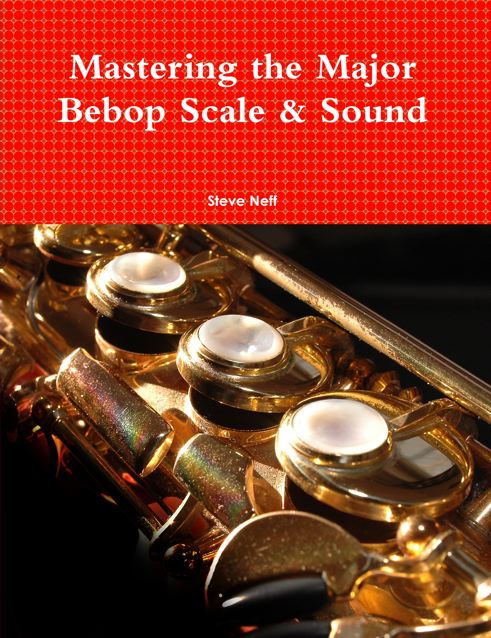Today, I am reviewing the RW Roberto’s Winds custom saxophone reeds released by Roberto Romeo at Roberto’s Winds in NYC. Roberto’s Winds reached out to me a few months ago and asked if I would be interested in reviewing their saxophone reeds. They sent me nine boxes of sax reeds in a variety of strengths to try out. Three boxes of tenor saxophone reeds, three boxes of alto saxophone reeds and three boxes of soprano saxophone reeds.
Roberto’s Winds RW Tenor, Alto and Soprano Saxophone Reeds
Roberto’s Winds saxophone reeds are made from arundo donax cane, which originates from the Rigotti reed factory in Cogolin, France (on the French Riviera). I found this interesting website at bassooncane.com that has some interesting details on the arundo donax cane and the plantations that grow it.
The Rigotti company is in the Provencal town of Cogolin to the golf of Saint-Tropez. Franco Rigotti and his son Daniël have a modern workshop where not only arundo donax is processed, but also where tools (for making reeds), and accessories for wind instruments are produced.-bassooncane.com
Rigotti sells their products and different cuts of saxophone reeds to companies such as Roberto’s Winds, Boston Sax Shop, Ishimori, Lupifaro, as well as their very own brand of Rigotti Gold saxophone reeds. I have tried all of these brands I have listed above and hope to complete a comparison review of all of them at some point in the future.
Rigotti Arundo Donax Cane for Reeds
Here is the description of the Roberto’s Winds RW custom saxophone reeds from the Roberto’s Winds website:
“For more than 30 years, Roberto Romeo has worked closely with many of the world’s top saxophonists, gaining uncommon insight into the art of sound production on the saxophone. In cooperation with Rigotti Reeds, Roberto has combined this knowledge with his world renowned creativity and precision craftsmanship to create his personal line of premium quality, affordable saxophone reeds.
Only Rigotti’s finest French cane is selected and precision-cut to meet Roberto’s rigorous standards of sound quality and durability. The “RW” custom cut gives it a solid core and powerful, even response throughout the entire range of the instrument while maintaining a colorful depth of character not found in other modern reeds.~Roberto Romeo (Owner and Repair Technician Roberto’s Winds)
Roberto’s Winds RW Tenor, Alto and Soprano Saxophone Reeds
Like the Rigotti Gold brand of reeds, the Roberto’s Winds saxophone reeds also come in three sizes per half size of reed. What this means, is that while other brands of reeds like Vandoren and D’Addario might come in sizes such as 2, 2 1/2, 3, 3 1/2, etc……. Roberto’s Winds saxophone reeds come in three strengths per half size such as 2 1/2 soft, 2 1/2 medium, 2 1/2 hard, and then the next level of reed strength is 3 soft, 3 medium and 3 hard, etc……
One benefit to having these extra reed strength options is that you can really fine tune and dial in the exact strength of saxophone reeds that you prefer to play. Instead of having a box of 3 strength saxophone reeds, where some of the reeds play soft, some of the reeds play hard and some of the reeds are perfect for you, you can now order a specific saxophone reed strength of 3 soft, medium or hard for exactly the strength of saxophone reed you prefer.
The second benefit to these extra reed strength options is that once you figure out which specific saxophone reed strength you prefer, you will get more saxophone reeds that play well for you right out of the box.
Roberto’s Winds RW Tenor, Alto and Soprano Saxophone Reeds
Roberto’s Winds sent me these sample boxes of reeds in early December and although I could have quickly done a reed review that same month, I wanted to play through the majority of the tenor sax reeds first so I could write about their consistency. You can find specific clips of me using the Roberto’s Winds reeds in the sound clips at the bottom of these reviews I have done since December.
- James Bunte Arc Tenor Sax Mouthpiece Review
- Getasax GS Reso Tenor Sax Mouthpiece Review
- SYOS Knoel Scott Alto Saxophone Mouthpiece Review
- Getasax GS Reso FG Tenor Sax Mouthpiece Review
- Absolute Color Line Alto Saxophone Mouthpiece Review
Recent Neffmusic Reviews using the Roberto’s Winds Saxophone Reeds
Roberto’s Winds RW Tenor, Alto and Soprano Saxophone Reeds
I honestly found the Roberto’s Winds saxophone reeds to be incredibly consistent in strength and playability. I have played most of the RW tenor sax reeds in the 3 soft and 2 1/2 hard strengths and every saxophone reed of the 16 I have tried over the last 3 1/2 months has played great for me.
I have only tried a couple of the alto saxophone reeds so far but the ones I have tried for the alto saxophone mouthpiece reviews above played exceptionally well right out of the box. I just started trying out the RW soprano reeds I received a few days ago but so far the three I have tried play great as well.
Roberto’s Winds Reed Comparison Chart
To describe the strength and the tone produced by the Roberto’s Winds saxophone reeds, I will have to relate them to the other Rigotti cane reeds I have been playing before I received the Roberto’s Winds saxophone reeds. These are the Rigotti Gold and Boston Sax Shop BSS saxophone reeds.
In my opinion, the Roberto’s Winds 2 1/2 hard saxophone reed felt like it was somewhere in-between the Rigotti Gold 2 1/2 strong and the 3 light saxophone reed. The RW 2 1/2 hard tenor saxophone reed felt similar in strength to the BSS (Boston Sax Shop) 2 1/2 tenor sax reed with the BSS reed feeling just a tad harder to me.
As far as tone and sound, the RW 2 1/2 hard reed seemed to sit somewhere in between the Rigotti Gold and the BSS (Boston Sax Shop) saxophone reed. The Roberto’s Winds saxophone reed wasn’t as bright as the Rigotti Gold reeds but it wasn’t as dark and warm as the BSS saxophone reeds as well. It seemed to combine some of the brighter tone characteristics of the Rigotti Gold reeds with a bit of the complex richness that the BSS Boston Sax Shop reeds have.
 Roberto’s Winds RW Tenor, Alto and Soprano Saxophone Reeds
Roberto’s Winds RW Tenor, Alto and Soprano Saxophone Reeds
The Roberto’s Winds 3 soft tenor saxophone reed felt a little harder than the Rigotti Gold 3 light sax reed but not as hard as the 3 BSS (Boston Sax Shop) saxophone reed.
The tone of both the 2 1/2 hard and 3 soft RW saxophone reeds was full and rich with a lot of complex overtones in the sound but missing some of the brightness and edge I perceive with Rigotti Gold saxophone reeds many times.
The Roberto’s Winds saxophone reeds seem to last a similar length of time as my other Rigotti cane reeds I have tried such as the Rigotti Gold, BSS and Lupifaro saxophone reeds but I really can’t give an exact measurement on this just because I review so many saxophone mouthpieces and have not yet played any of these Roberto’s Winds sax reeds to their death (meaning they become too soft for me). I will state that the RW reeds I have tried so far are still in reed cases in the hopes that I will be able to use them again on future mouthpiece trials and reviews.
Roberto’s Winds RW Tenor, Alto and Soprano Saxophone Reeds
If you are interested in the Roberto’s Winds RW custom saxophone reeds, you can order them from the Roberto’s Winds website. They come in strengths from 2-5 and are made for all the saxophones (baritone, tenor, alto and soprano saxophone) as well as for Bb clarinet and bass clarinet.
Thanks to Nicky at Roberto’s Winds for sending me these great RW saxophone reeds to try. I am very grateful to have the chance to try these Roberto’s Winds saxophone reeds as they give me another choice of reed when playing the saxophone that are consistent and dependable.
If you try the Roberto’s Winds saxophone reeds, please come back and tell us what you think of them in the comment section below. Steve








Thanks for another honest review Steve!
Your experience with Roberto’s mirrors mine with regards to their strength and tonal characteristics as compared to Rigotti Gold and BSS reeds – all of which I have played pretty extensively. So I’ll just add that European customers can buy them direct from Rigotti here:
http://www.reedsonline.fr/boutique_reedsonline/en/accueil-gb/
Ian
On Otto Links I never could use any other reeds than Orange Rico’s. After 30 years I’m very happy with the RW reeds. And off course they are so much more consistent. I used Orange box Rico 3 before, now I use RW 3M
I have been using Roberto’s reeds for some years now on tenor, soprano, bari, and bass clarinet and only on soprano do I also use Vandoren blue box reeds. Over this time the consistency has been very good. I find that they have very good resonance, without the overt brightness I do not personally like, and have a deeper sound in the middle of the overtone range, They do very well in altissimo. I am particularly fond of the bass clarinet reeds. I have also found that they last quite long.
The trick with reeds that have such 1/4 strengths is to find just the right one. I did this while visiting NY and getting a few individual reeds to try first and found just what I needs, usually a bit stronger than what I was otherwise using.
Hey Piotr, I’ve been trying to find a review of the Roberto’s bass clarinet reeds for so many years and haven’t found any before, so thanks so much for sharing your experiences here! Just wondering how to they compare to the Vandoren Blue Box Bass Reeds in terms of strength & feel? Thanks a lot again!
-Josh W.
I tried the RW tenor reeds (2 1/2 medium) on a Drake Reso M, 10MFan Celebration and GS Mark II (all with an 8 tip opening). They play fine on the Drake, really good on the 10MFan and exceptional on the GS. They’re so exceptional on the GS I find the combo unbeatable. The core is very strong and resonant. I find the reeds seem to like a wide air column. I agree with everything Steve said about them. Steve, I’d love to hear you play them on a GS Mark II!
Steve,
I love the RW and Boston Sax Black label reeds for alto and tenor. I love the Marca Vintage and D’Addario Reserve reeds for soprano. I love the RW reeds and D’Addario Jazz Select reeds for bari.
I talked to Mark Sepinuck today about one of his mouthpieces and I ended up sharing with him my new method for breaking in reeds. I thought I would share my method with you also.
I wrote this very detailed method to help other saxophonists. I know the synthetic reeds people will think I’m crazy for messing with cane reeds. I put the basic procedures in bold lettering. (I see the bold lettering did not paste into this comment section). I realized I put into many little details to help people with reed problems. I will go through this method below and put this: *** next to the sentences that are the basic ideas for the breaking-in method. If you already know how to balance reeds and all the other stuff about reeds, you can skip through that stuff.
I will share the link (below) to the YouTube video in which a reed player shares this method, but I wanted to also tell you some improvements to the method that work better for me. I think I am having better results than the reed player in the video because I’m getting at least 8 good reeds out of a box of 10. Maybe because the brands I’m using are more consistent lately.
I have broken-in reeds that I finished breaking in this past November, and these reeds still play like new.
Here’s my improved method for breaking in reeds:
Only do this with a new box of reeds. If you have already played hard and loud on a reed, the reed fibers are already damaged or weakened.
***Session 1: ***After opening a new box of reeds, dip each reed into water (don’t soak) and lay the reeds flat side up, with the bark-side lying on a table. I’ve been using bottled water, but I don’t know if that is necessary, maybe chlorinated water is okay, but I never use chlorinated water. ***Wait 5 minutes before playing the first reed to let the water soak into the reed a little. ***Play each reed between 30 seconds and a minute, softly and not the highest and lowest range of notes. ***Place the reed on it’s bark-side, so the reed can dry more evenly. Don’t put a wet reed flat-side down onto your reed holder (of any kind) Let it dry, before putting it into a reed holder.
If a reed is obviously un-balanced (plays stuffy) or very hard, go ahead and adjust the reed with your reed tool or sand paper. If the remaining reeds (for your session) become dry, dip them again before playing them. If you don’t know how to balance a reed, look for YouTube videos on this topic… you will be amazed how beautifully you can get each reed to play if you understand this. I’ve been able to get each reed to play beautifully and identically with an easy balancing of the reeds (I use a reed geek). If some reeds feel too soft, don’t discard them, go ahead and break them in because the softer reeds work better in the winter or when there is less humidity. I use the softer reeds for my larger tip opening mouthpiece. Sometimes, I will use two boxes of reeds (same brand and size) to combine the soft reeds from both boxes into one group of reeds and I will use the harder reeds from the two boxes combined into another group. I suggest a good sturdy reed holder (plastic or glass) to help keep the reeds flat. Just remember to not put the wet reed into your reed holder until it is completely dry.
***Session 2: ***I have found that the timing between sessions doesn’t matter… just make sure the reeds are completely dry before doing the next session. Sometimes I will do the 2nd session (and maybe the 3rd session) the same day as the 1st session. Sometimes I will wait until the next day. Sometimes, I will skip days between sessions if am too busy and this did not affect the outcome of my reeds at all.
***On the 2nd session, just repeat the 1st session.
***Session 3: ***Soak the reeds for around 30 seconds. If you are using a heater in your house or the air is naturally dry where you live, make sure you soak the reed long enough for any warpage to disappear at the tip of the reed. On every session, you only need to play each reed between 30 seconds and a minute. ***On the 3rd session, I will start testing the low notes. ***If the low notes don’t respond well, I will flatten the back of the reed. If your reed is on the soft side, be careful to not flatten the reed all the way to the tip because you will make the reed too soft if you remove some material in the top section of the reed that breaks away from the facing. It’s most important to flatten the part of the reed that lays flat on the table and part-way up the rails. If the entire bottom part of the reed lays flat on the table, make sure you remove some reed material at the very bottom. Some mouthpieces are shorter and the reed overhangs the table of the mouthpiece, so you don’t have to worry about that very bottom part of the reed on those mouthpieces. You should not have to flatten the back of a reed multiple times. Maybe you didn’t flatten it enough on a previous session, so go ahead and flatten it again if you need. When you get past 5 or 6 sessions, then the back of the reed should stay flat.
***Sessions 4 – 28: ***You will gradually increase the water soaking time, depending on which session you are at and depending on the humidity. Inside my house, the humidity is usually around 50% (I have some small digital humidity meters). I notice when I run the heater in the winter, I have to soak the reeds longer for the reeds to become straight at the tip. I found that the warping doesn’t damage the reeds. I have reeds that I broke-in during the winter and some of these reeds warped terribly when I had the heater on. These reeds sound and last just as long as my other reeds.
***Here is my formula for water soaking (when I have 50% humidity):
For every 5 sessions, I will add two minutes of soaking time. For example for the 8th session, I will soak my reeds for 2 1/2 minutes. For the 15th session, I will soak my reeds for 6 minutes.
If you accidentally let them soak too long, let them dry some before playing on those reeds. Don’t worry if they don’t sound their best after soaking them too long… just play them softly and they will be fine after they dry out. I did this recently and the reeds didn’t sound great after soaking them too long. The next day when I soaked the reeds the proper time, they sounded great.
The reed player in the YouTube video, did not suggest to increase soaking time, as you go along. I figured this out because if I just dipped the reed in the water, like the Reed player says to do, then the reed wasn’t getting wet enough to play after a few sessions.
The reed player says to increase the number of sessions for the larger reeds (tenor and bari reeds). I’ve broken in some of my bari reeds for 35 sessions. Some of my bari reeds, I’ve only broken in for 30 sessions and they are playing great. I think I figured out a way to lessen the number of sessions… I play a little louder starting around the 10th session and I play more loudly around the 20th session. I do 28 sessions for my alto and soprano reeds. I do 30 sessions for my tenor reeds.
During the breaking-in of your reeds, you will see as you get up to around the 10th or 15th session, that the reeds don’t become transparent (water-logged) when you soak them in the water. This shows that this method works. You don’t ever have to do the rubbing of the vamp of the reed to make the reed more sealed. Just doing this method makes the reed become resistant to water-logging. The broken-in reeds will show a little transparency after you play them for straight two hours, but that is normal.
I found a video on YouTube where someone did a study on just soaking the reeds over and over many times to break them in instead of having to play on them to break them in. The number of soakings required was ridiculous. A machine was set up to dip the reeds in water… I forgot the number of times, but I think it was in the thousands. The reed player in the YouTube video (below link) said he tried just wetting the reeds once a day for a month, but this did not break in his reeds at all. He said it was just like they were brand new… the reeds did not get resistant to the water from just being dipped once a day. The combination of lightly playing the reeds and dipping and soaking them in water every session is what makes this method work.
I actually practice important things on those small one-minute playing periods on each reed. You can actually improve on some things in these little playing times.
***Rotate your reeds, and your reeds will probably last you at least a year. Don’t use the same reed every day. I just started doing this in October, so I don’t know for sure yet how long my reeds will last. The reed player in the video says he has reeds that he still plays on after a couple of years. I will put my wet (broken in) reed from a gig into my reed holder after a gig, but I will take it out when I get home (or to my hotel room) and let it dry.
***Never do overtone exercises on the reeds you are breaking in. The overtone exercises will put more stress on the reed… even more than playing altissimo.
I love using the D’Addario Plasticover reeds for practice. The synthetic reeds work great for some people. If the Plasticover reeds aren’t the correct strength, for your mouthpiece, then they are no use to you because you defeat the purpose of the plastic coated reeds if you have to scrape them on the vamp side. I have great results scraping the Plasticover reeds on the flat side, but I only scrape them on the part of the reed that lays flat on the mouthpiece (not the upper part of the reed towards the tip). The Plasticover reeds are terrible for not being flat on the back-side of the reed (their logo can be a big culprit on the backside of the reed), but once I get it flat with my reed geek, these reeds are great enough even for most gigs… but I still prefer my premium reeds. You can even do overtone exercises on the Plasticover reeds if you flatten the back of the reed.
Here is the Youtube video I was mentioning above. The title of the video is “What Robert Marcellus Taught Me About Reeds”. https://www.youtube.com/watch?v=XmTL_AOEOiQ